Industrial steam boilers are the heart of many production processes, and unexpected failures can lead to costly downtime, unsafe conditions, and expensive emergency repairs. Without a structured preventive maintenance plan, boilers are more likely to suffer from scaling, corrosion, inefficient combustion, and shortened service life.
Yes, industrial steam boilers require a preventive maintenance plan that includes daily, weekly, monthly, and annual inspections and servicing. A typical plan covers feedwater quality checks, blowdown operations, burner tuning, pressure and safety valve testing, cleaning of heat transfer surfaces, and calibration of control instruments. Preventive maintenance ensures boilers run at peak efficiency, reduces unplanned breakdowns, extends equipment lifespan, and supports compliance with safety regulations.
With a well-implemented plan, operators can ensure safe, reliable, and cost-effective steam generation.
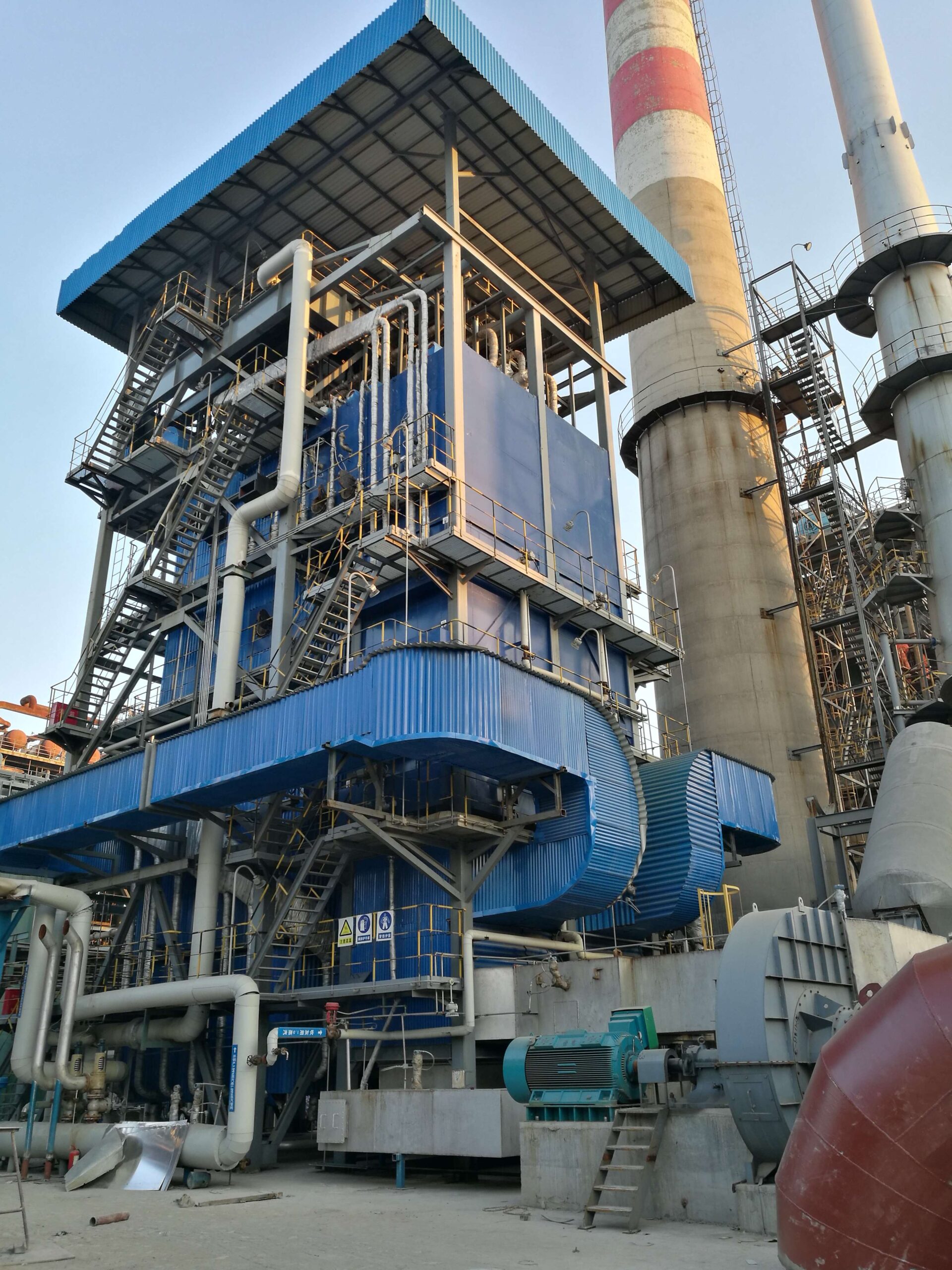
What are the key objectives of a preventive maintenance plan for industrial boilers?
Industrial boilers are the backbone of manufacturing and energy systems, but when they fail unexpectedly, the consequences include production downtime, safety hazards, and expensive emergency repairs. Many companies struggle with unplanned outages because maintenance is often reactive rather than proactive. The solution lies in adopting a preventive maintenance (PM) plan, which sets clear objectives to keep boilers operating efficiently, safely, and reliably over their service life.
The key objectives of a preventive maintenance plan for industrial boilers are to maximize efficiency, enhance safety, extend equipment lifespan, ensure regulatory compliance, and reduce unexpected downtime. Preventive maintenance achieves these goals through scheduled inspections, cleaning, calibration, and component replacement before failures occur.
Preventive maintenance not only minimizes costly breakdowns but also builds confidence in plant operations. A well-designed PM plan helps plant managers predict maintenance budgets, ensures consistent steam supply, and maintains compliance with industry standards. Understanding these objectives in detail allows companies to avoid the high costs of neglect and unplanned repairs.
Preventive maintenance is only about cleaning industrial boilers.False
Preventive maintenance also involves inspection, calibration, testing of safety devices, and replacement of worn parts.
One of the key goals of boiler preventive maintenance is improving efficiency.True
Regular inspection and cleaning prevent fouling and scaling, maintaining optimal heat transfer and efficiency.
Core Objectives of Boiler Preventive Maintenance
1. Maximizing Efficiency
Scaling, soot buildup, and poor combustion adjustment reduce heat transfer efficiency. PM ensures routine cleaning and burner tuning, which can improve fuel-to-steam conversion by up to 15%.
2. Enhancing Safety
Safety valve checks, low-water cutoff tests, and flame safeguard inspections prevent catastrophic boiler failures. Preventive measures reduce risks of explosions and workplace accidents.
| Safety Check | Purpose | Frequency |
|---|---|---|
| Safety Valve Test | Ensure pressure relief | Semi-annual |
| Low-Water Cutoff | Prevent dry firing | Monthly |
| Flame Safeguard | Ensure burner safety | Quarterly |
3. Extending Equipment Lifespan
Corrosion, scaling, and tube erosion are leading causes of premature boiler failure. Preventive maintenance identifies these early and extends boiler life by years, saving major capital costs.
4. Ensuring Regulatory Compliance
Industrial boilers are subject to strict emission and safety regulations. A PM plan ensures compliance with ASME, OSHA, and local environmental standards through proper recordkeeping and inspection schedules.
| Compliance Area | Requirement | PM Strategy |
|---|---|---|
| Emissions | Meet NOx and CO2 limits | Burner tuning, fuel-air ratio adjustment |
| Safety Codes | ASME/OSHA inspections | Documentation and certified checks |
| Insurance Standards | Annual inspections | Coordination with insurers |
5. Reducing Unexpected Downtime
PM ensures redundancy checks, spare parts management, and predictive testing (e.g., vibration analysis, thermography), preventing costly production interruptions.
Conclusion
The objectives of a preventive maintenance plan for industrial boilers go beyond routine care—they are central to efficiency, safety, compliance, and business continuity. Companies that prioritize preventive maintenance achieve stable operations, reduce operational costs, and prolong boiler service life, while those that neglect it face higher risks of failures and penalties.
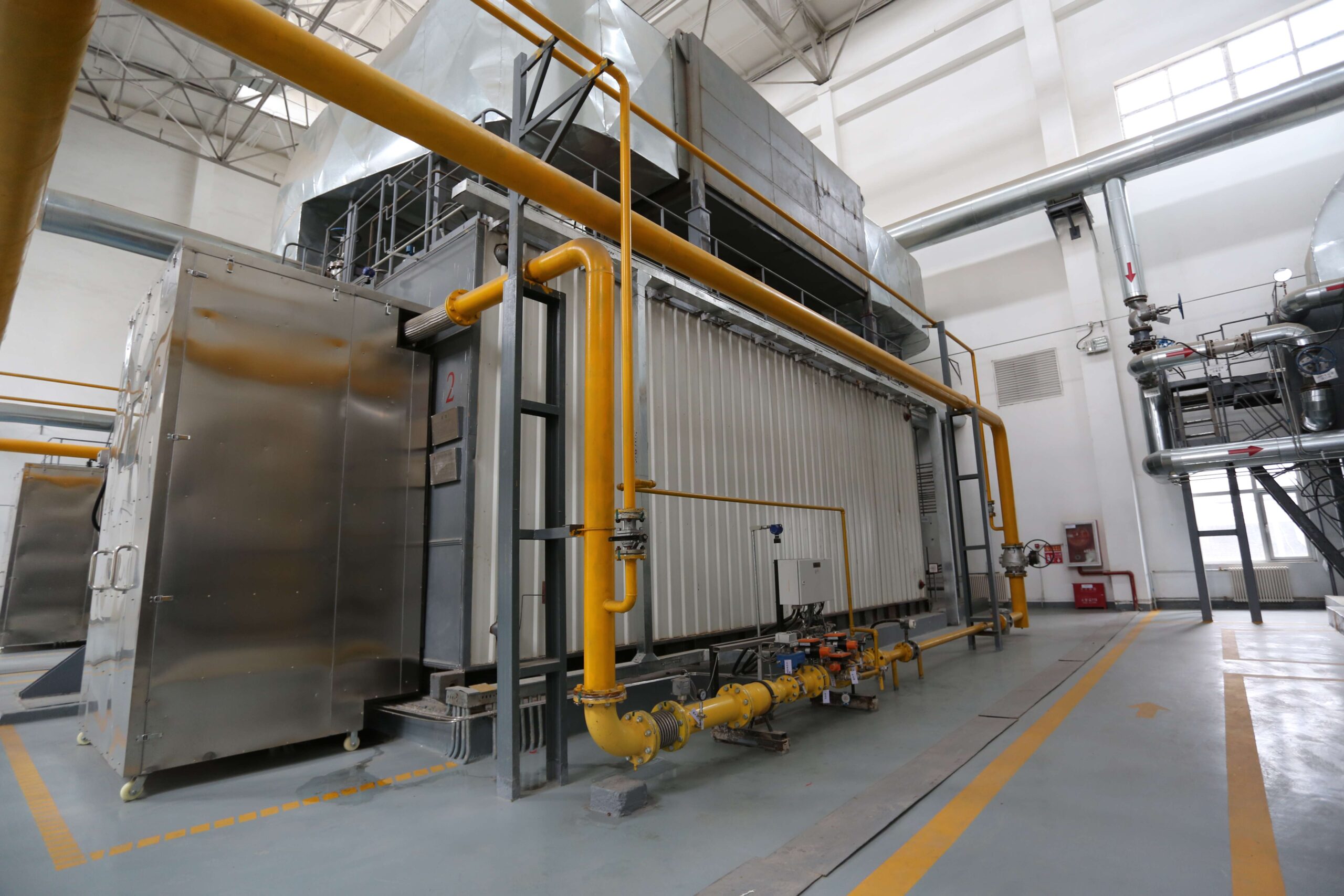
What daily checks should operators perform to maintain boiler health?
Boilers are vital to industrial and energy systems, yet small unnoticed issues can quickly escalate into costly failures or dangerous accidents. Many breakdowns stem from neglecting simple daily checks, which leaves boilers vulnerable to scaling, pressure fluctuations, and unsafe operating conditions. The solution is a disciplined routine where operators perform daily inspections to detect early warning signs, safeguard efficiency, and prevent major downtime.
Operators should perform daily checks on water levels, pressure and temperature gauges, fuel supply, burner operation, safety devices, and blowdown systems to maintain boiler health. These checks ensure safe operation, prevent scaling and overheating, and allow early detection of leaks or abnormal conditions.
Daily checks form the frontline of boiler maintenance. They require only minutes but provide critical insights into system health, ensuring the boiler operates safely and efficiently until scheduled preventive maintenance can take place.
Daily boiler checks are unnecessary if annual inspections are performed.False
Annual inspections are not enough; daily checks catch immediate operational issues before they escalate.
Checking boiler water level every day prevents dry firing.True
Low-water level is one of the most dangerous boiler conditions, and daily monitoring prevents accidents.
Essential Daily Boiler Checks for Operators
1. Water Level and Feedwater System
Verify the water level in the gauge glass is within safe limits.
Test the low-water cutoff device.
Check feedwater pump operation and suction pressure.
| Daily Check | Purpose | Risk if Ignored |
|---|---|---|
| Gauge Glass Reading | Ensure correct water level | Dry firing, boiler damage |
| Low-Water Cutoff Test | Safety shutdown | Explosion risk |
| Pump Function | Maintain feedwater flow | Pressure loss |
2. Pressure and Temperature
Confirm pressure gauge matches normal operating range.
Record steam temperature and check for unusual fluctuations.
Monitor safety relief valve behavior.
3. Burner and Combustion
Inspect flame color and stability.
Check fuel supply pressure (gas, oil, or coal feed).
Ensure no unusual noise or vibration from the burner.
4. Safety Devices
Observe operation of alarms and interlocks.
Confirm safety valves are free from obstruction.
Ensure flame safeguard control cycles properly.
| Safety Device | Daily Check | Benefit |
|---|---|---|
| Safety Valves | Clear, unblocked | Prevents overpressure |
| Alarm Systems | Audible/visible function | Early warning |
| Interlocks | Proper cycling | Automated protection |
5. Blowdown and Water Quality
Perform bottom blowdown to remove sludge.
Check conductivity or TDS (total dissolved solids) levels.
Ensure chemical treatment system is operating correctly.
Conclusion
Daily checks are the most practical and effective way to maintain boiler health, providing an early-warning system against unsafe conditions and efficiency losses. By consistently monitoring water levels, pressure, combustion, and safety systems, operators ensure reliable performance and extend the life of the boiler while reducing costly unplanned downtime.
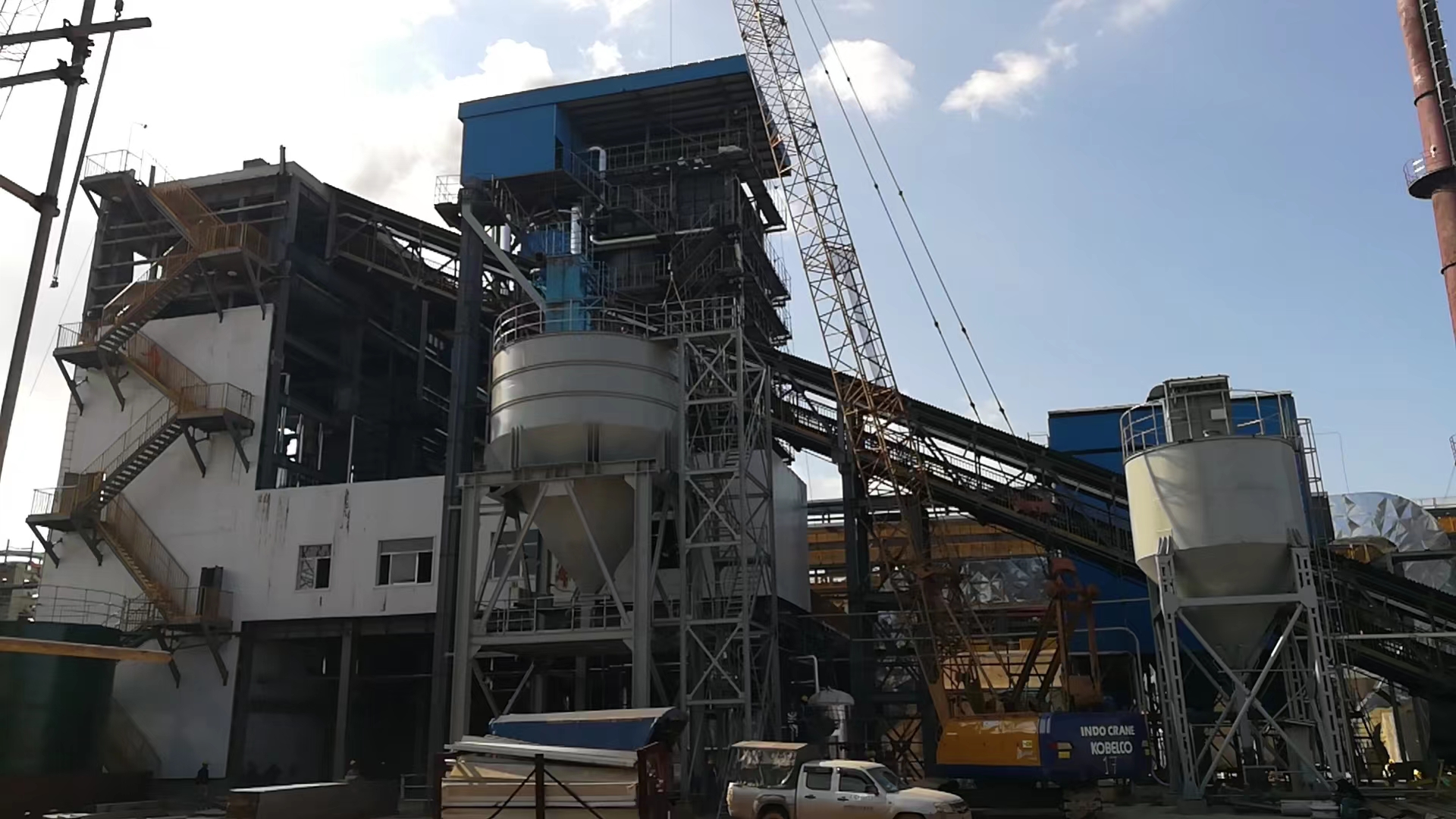
Which weekly and monthly inspections are essential for efficiency and safety?
Industrial boilers run continuously under demanding conditions, making them prone to scaling, corrosion, and efficiency losses if not routinely inspected. Many failures occur because daily checks catch only surface-level issues, while deeper system health requires weekly and monthly inspections. Ignoring these intervals can lead to dangerous pressure build-ups, fuel wastage, and unexpected downtime. The solution is to implement structured inspection routines at these longer intervals to complement daily monitoring.
Essential weekly and monthly inspections for boiler efficiency and safety include testing low-water cutoffs, safety valves, water gauge glass, combustion settings, blowdown systems, and water chemistry. Weekly inspections focus on immediate operational safety, while monthly inspections verify system calibration, emissions performance, and structural integrity.
Weekly and monthly inspections bridge the gap between daily operator checks and annual certified inspections. They give engineers the opportunity to validate performance, optimize combustion efficiency, and ensure compliance with safety codes before issues become critical.
Weekly and monthly boiler inspections are optional if daily checks are performed.False
Daily checks alone are insufficient; weekly and monthly inspections detect deeper performance and safety issues.
Testing low-water cutoff weekly prevents unsafe boiler operation.True
A failed cutoff can cause catastrophic dry firing, so weekly tests are vital for safety.
Key Weekly Boiler Inspections
Low-Water Cutoff Test: Confirm device shuts down burner if water level falls.
Water Gauge Glass: Clean and check connections for leaks or blockages.
Blowdown Valve Operation: Test both bottom and surface blowdowns for sludge and TDS control.
Safety Valve Check: Manually lift valve where permitted to confirm pressure release function.
Combustion Check: Observe flame shape and burner performance.
| Weekly Inspection | Purpose | Safety/Efficiency Impact |
|---|---|---|
| Low-Water Cutoff | Prevent dry firing | Protects boiler integrity |
| Blowdown Test | Remove sludge and TDS | Maintains heat transfer |
| Safety Valve | Pressure relief | Prevents explosion |
| Burner Flame | Efficient combustion | Reduces fuel costs |
Key Monthly Boiler Inspections
Water Treatment Verification: Send water samples to lab for detailed chemistry analysis.
Combustion Efficiency Test: Use analyzers to measure O₂, CO₂, and CO levels; adjust burner accordingly.
Pressure Control Calibration: Inspect and calibrate operating and high-limit pressure controls.
Stack and Emissions Monitoring: Check flue gas temperature and emissions compliance.
Mechanical Inspections: Examine refractory, insulation, and piping for wear or damage.
| Monthly Inspection | Purpose | Benefit |
|---|---|---|
| Combustion Analysis | Optimize fuel-air ratio | Improves efficiency |
| Pressure Controls | Prevent overpressure | Enhances safety |
| Emissions Check | Regulatory compliance | Avoids penalties |
| Structural Review | Detect wear early | Extends lifespan |
Conclusion
Weekly and monthly inspections form the backbone of a strong preventive maintenance plan. Weekly tasks emphasize immediate safety devices like low-water cutoffs and blowdowns, while monthly tasks verify deeper efficiency factors such as combustion tuning, water chemistry, and emissions. Together, they protect against catastrophic failures, improve energy efficiency, and extend boiler service life, ensuring reliable and safe operations.
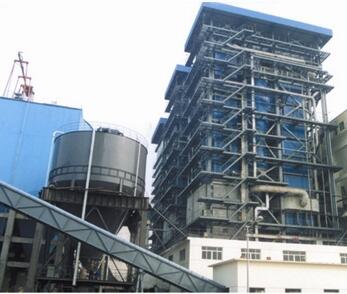
What annual overhauls and safety tests are required by regulations?
Industrial boilers are governed by strict safety regulations because they operate under high pressure and temperature conditions that can pose catastrophic risks if neglected. Daily, weekly, and monthly inspections help maintain routine performance, but regulatory bodies require comprehensive annual overhauls and safety tests to ensure the boiler is structurally sound, compliant, and safe for continued operation. Failure to perform these mandated tests can lead to accidents, heavy fines, loss of insurance coverage, and even forced plant shutdowns.
Annual overhauls and safety tests required by regulations typically include hydrostatic pressure testing, safety valve certification, boiler tube and drum inspections, combustion efficiency analysis, control system calibration, refractory examination, and non-destructive testing (NDT) of pressure parts. These tests are mandated by ASME, OSHA, insurance companies, and local boiler authorities to verify compliance and operational safety.
Annual compliance testing is not only a legal requirement but also a critical safeguard for efficiency, reliability, and risk management. By committing to full overhauls and safety verifications once a year, operators ensure long-term boiler health while avoiding costly unplanned outages.
Annual boiler overhauls are optional if weekly inspections are performed.False
Weekly checks cannot replace annual regulatory inspections, which require certified testing and detailed evaluation.
Hydrostatic pressure testing is a required annual safety test for industrial boilers.True
Regulations mandate hydrostatic testing to confirm boiler pressure vessel integrity.
Essential Annual Boiler Overhauls
Internal Cleaning and Visual Inspection
Removal of scale, soot, and deposits followed by a thorough inspection of tubes, drums, and headers for cracks, corrosion, and pitting.Refractory and Insulation Examination
Check furnace lining, firebrick, and insulation for wear and thermal stress damage.Burner and Combustion System Overhaul
Disassemble, clean, and calibrate burners, igniters, and fuel delivery systems.Tube and Drum Testing
Ultrasonic testing (UT), radiographic testing (RT), or magnetic particle testing (MT) to detect cracks or thinning.
| Annual Overhaul Task | Purpose | Compliance Impact |
|---|---|---|
| Internal Cleaning | Remove scaling and fouling | Maintains efficiency |
| NDT of Tubes | Detect hidden cracks | Ensures safety |
| Burner Overhaul | Optimize combustion | Meets emissions limits |
| Refractory Check | Prevent heat loss | Reduces fuel waste |
Required Annual Safety Tests
Hydrostatic Pressure Test
Conducted at 1.25x working pressure to verify vessel integrity.Safety Valve Certification
Testing and stamping of safety valves to ensure proper set pressure and lift function.Pressure Control and Alarm Calibration
Verify operating and high-limit pressure controls, interlocks, and alarms.Flue Gas Analysis and Emissions Testing
Confirm compliance with NOx, CO₂, and particulate matter regulations.Low-Water Cutoff and Flame Safeguard Verification
Confirm automatic shutdown systems are functional under fault conditions.
| Annual Safety Test | Purpose | Regulatory Standard |
|---|---|---|
| Hydrostatic Test | Vessel strength verification | ASME Code |
| Safety Valve Test | Overpressure protection | OSHA / Insurance |
| Emissions Testing | Environmental compliance | EPA / Local law |
| Control Calibration | Safe automatic operation | NFPA / ASME |
Conclusion
Annual overhauls and safety tests are non-negotiable elements of boiler compliance and risk management. These mandated procedures—ranging from hydrostatic testing and valve certification to NDT inspections and emissions checks—provide documented proof that the boiler is safe, efficient, and legally operable. By adhering to regulatory schedules, operators safeguard personnel, protect assets, and maintain uninterrupted industrial operations.
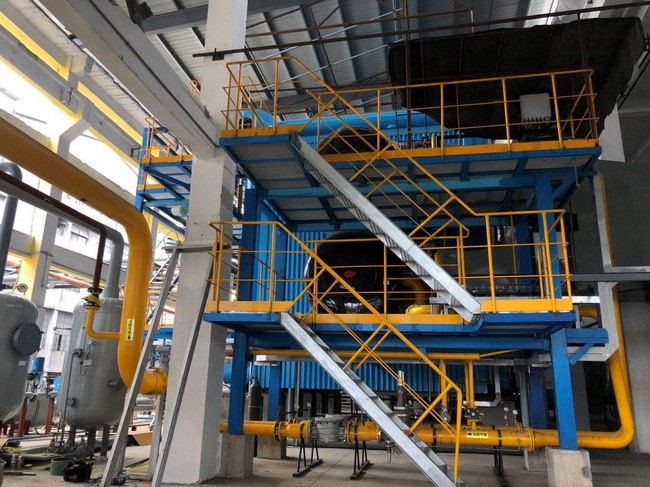
How does water treatment and blowdown scheduling prevent scaling and corrosion?
Boiler failures caused by scaling and corrosion account for some of the most expensive downtime events in industrial plants. When untreated water enters a boiler, dissolved minerals precipitate into hard scale on heat-transfer surfaces, while oxygen, carbon dioxide, and acidic compounds drive corrosion that eats away at metal parts. These issues reduce efficiency, overheat tubes, and eventually cause leaks or explosions. The solution lies in proper boiler water treatment combined with scheduled blowdown procedures, which together maintain water chemistry within safe operating limits and protect the system from long-term damage.
Water treatment prevents scaling and corrosion by chemically conditioning feedwater to control hardness, alkalinity, oxygen, and pH, while blowdown scheduling removes concentrated impurities and sludge from the boiler. Together, they maintain optimal water chemistry, reduce deposit formation, minimize corrosion risks, and extend the boiler’s operational lifespan.
This combination is not just best practice but a regulatory expectation in most jurisdictions. Without effective treatment and blowdown, boilers rapidly lose efficiency, fail emissions compliance, and require costly tube replacements or vessel repairs.
Boiler blowdown is only necessary after visible scale forms.False
Blowdown must be scheduled proactively to prevent scale before it develops.
Chemical water treatment reduces both scaling and corrosion.True
Chemicals like phosphates, sulfites, and amines control hardness, oxygen, and pH to protect boiler surfaces.
Mechanism of Scaling and Corrosion
Scaling forms when calcium, magnesium, and silica precipitate at high temperatures, creating insulating layers that reduce heat transfer and overheat tubes. Corrosion occurs when dissolved oxygen, carbon dioxide, or improper pH weakens steel surfaces, leading to pitting or uniform thinning. Both processes accelerate under poor water chemistry control.
| Problem | Cause | Effect on Boiler |
|---|---|---|
| Scaling | Calcium, magnesium, silica precipitation | Reduced efficiency, tube overheating |
| Oxygen Corrosion | Dissolved O₂ in feedwater | Pitting, metal loss |
| Acid Corrosion | Low pH, CO₂ ingress | Uniform thinning, leaks |
| Caustic Embrittlement | Excess alkalinity | Cracking of boiler metal |
Role of Water Treatment
Softening and Demineralization
Removes calcium and magnesium ions to prevent hardness scale.
Reverse osmosis (RO) or ion exchange systems often used.
Oxygen Scavengers
Sodium sulfite or hydrazine added to neutralize dissolved oxygen.
Prevents pitting corrosion in feedwater lines and boiler tubes.
pH and Alkalinity Control
Neutralizing amines raise condensate pH.
Prevents acidic corrosion in return lines.
Phosphate Treatment
Precipitates hardness as soft sludge instead of hard scale.
Role of Blowdown Scheduling
Boilers concentrate impurities as steam is generated. Blowdown removes a portion of concentrated boiler water, replacing it with treated feedwater to keep solids within limits.
Bottom Blowdown: Removes sludge and settled solids from the bottom of the boiler.
Surface Blowdown: Controls dissolved solids and TDS by skimming surface water.
| Blowdown Type | Frequency | Purpose |
|---|---|---|
| Bottom Blowdown | Daily or weekly | Removes sludge and mud |
| Surface Blowdown | Continuous or intermittent | Controls TDS and foaming |
Best Practices for Preventing Scaling and Corrosion
Establish water chemistry limits (TDS, hardness, alkalinity, pH, oxygen).
Automate continuous blowdown systems for precise TDS control.
Perform regular lab tests on feedwater, boiler water, and condensate.
Use oxygen scavengers and amines as part of chemical treatment.
Coordinate treatment with blowdown to avoid under- or over-blowing, which wastes energy.
Conclusion
Water treatment and blowdown scheduling work hand in hand to prevent scaling and corrosion. Treatment chemically conditions feedwater to neutralize hardness and corrosives, while blowdown physically removes concentrated impurities. Together, they safeguard efficiency, extend boiler life, and maintain compliance with operational and safety standards, ensuring that industrial boilers perform reliably for years without costly failures.
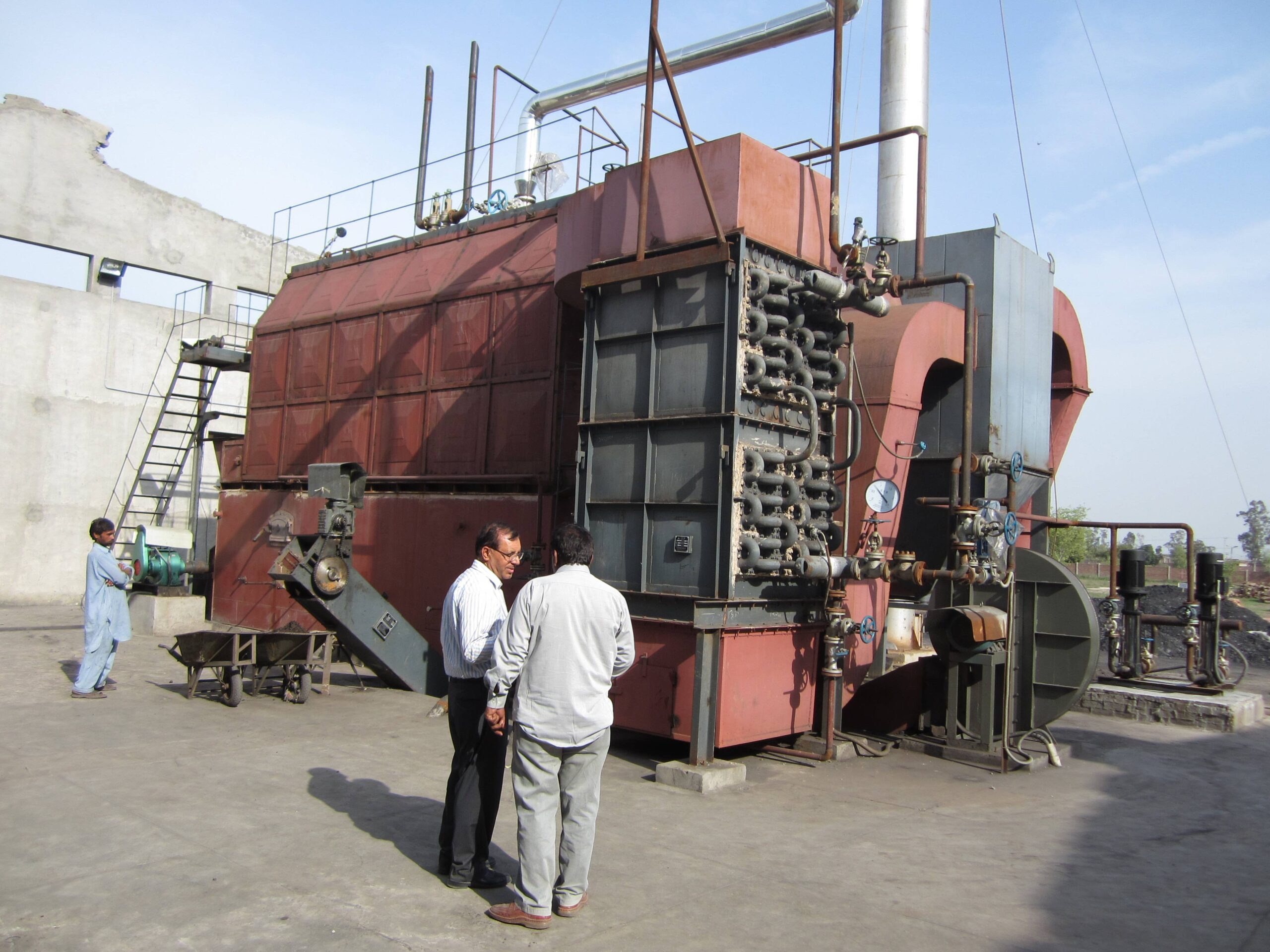
What role do digital monitoring and predictive maintenance play in modern boiler care?
Boiler maintenance has traditionally been reactive or preventive, relying on scheduled inspections and operator experience. However, in modern plants, this approach often leads to either unnecessary maintenance or missed warning signs of failure. The consequences are costly downtime, higher fuel consumption, and even safety risks. The solution today lies in digital monitoring and predictive maintenance technologies, which leverage real-time data, sensors, and analytics to optimize boiler health and prevent failures before they occur.
Digital monitoring provides continuous real-time visibility into boiler performance parameters such as pressure, temperature, water chemistry, and combustion efficiency, while predictive maintenance uses AI and data analytics to forecast potential failures and schedule interventions proactively. Together, they improve efficiency, enhance safety, extend boiler lifespan, and reduce operating costs.
This shift transforms boiler care from a fixed schedule to a dynamic, data-driven strategy. It allows operators to focus resources where needed most, ensuring compliance, reliability, and profitability in today’s competitive industrial landscape.
Predictive maintenance eliminates the need for human inspections of boilers.False
Human inspections remain essential for visual checks and regulatory compliance, but predictive tools reduce unexpected failures.
Digital monitoring systems can track water chemistry and alert operators to scaling risks.True
Sensors integrated with control systems continuously measure conductivity, pH, and oxygen levels to prevent scaling and corrosion.
How Digital Monitoring Works
Digital monitoring integrates IoT sensors, PLCs (programmable logic controllers), and SCADA (supervisory control and data acquisition) systems to capture and analyze data such as:
Steam pressure and temperature trends
Fuel-to-air ratio and combustion efficiency
Flue gas composition (O₂, CO, NOx)
Water level, TDS, and pH readings
Vibration and thermal stress on critical components
| Monitoring Parameter | Benefit | Example Alert |
|---|---|---|
| Pressure & Temp | Prevent overpressure | Sudden spike in steam temp |
| Flue Gas O₂ | Optimize combustion | Excess O₂ indicates inefficiency |
| Conductivity | Control TDS | High reading triggers blowdown |
| Vibration | Detect mechanical wear | Bearing fault in feed pump |
Predictive Maintenance Capabilities
Predictive maintenance relies on machine learning algorithms trained on historical and real-time data. These tools identify patterns and predict failures before they happen:
Failure Forecasting: Detects early tube fouling, corrosion hotspots, or burner misfires.
Condition-Based Scheduling: Maintenance is triggered by data trends, not fixed intervals.
Digital Twin Modeling: Simulates boiler performance under different conditions to anticipate wear.
Energy Optimization: Recommends tuning adjustments to minimize fuel use.
| Predictive Tool | Application | Outcome |
|---|---|---|
| Vibration Analysis | Pumps and motors | Early bearing replacement |
| Infrared Thermography | Tubes & refractory | Detects hotspots |
| AI Algorithms | Historical trend analysis | Predicts tube leaks |
| Digital Twin | Real-time simulation | Optimizes efficiency |
Benefits of Digital Monitoring and Predictive Maintenance
Efficiency Gains – Boilers run closer to design efficiency, reducing fuel costs by 5–15%.
Enhanced Safety – Early detection of pressure anomalies or oxygen imbalances prevents accidents.
Reduced Downtime – Predictive analytics can cut unplanned outages by up to 50%.
Extended Lifespan – Continuous monitoring reduces thermal stress and material fatigue.
Regulatory Compliance – Automated reports support audits and emissions monitoring.
Conclusion
Digital monitoring and predictive maintenance are redefining modern boiler care. By turning boilers into smart, connected assets, operators gain real-time insights and foresight into potential problems, shifting maintenance from reactive to proactive. This data-driven approach not only improves efficiency and safety but also ensures compliance and long-term operational stability in industrial and power generation facilities.
🔍 Conclusion
A preventive maintenance plan is not optional but a critical requirement for industrial steam boilers. By following a structured schedule of inspections and servicing, companies can ensure maximum reliability, efficiency, and regulatory compliance while avoiding costly breakdowns.
📞 Contact Us
💡 Need help building a preventive maintenance plan? We provide boiler maintenance contracts, water treatment programs, and digital monitoring solutions to keep your system running at its best.
🔹 Contact us today to secure a preventive maintenance strategy for your industrial steam boiler. 🛠🔥✅
FAQ
Is there a preventive maintenance plan for industrial steam boilers?
Yes. A preventive maintenance plan helps ensure safety, efficiency, and longevity. It typically includes:
Daily checks – Water levels, pressure, temperature, fuel supply, and blowdown.
Weekly tasks – Safety valve testing, burner inspection, low-water cutoff checks.
Monthly inspections – Combustion efficiency checks, flame monitoring, leak detection.
Quarterly/annual servicing – Tube cleaning, refractory inspection, feedwater system maintenance, and calibration of safety devices.
This proactive approach reduces breakdowns, unplanned downtime, and costly repairs.
Why is preventive maintenance important for steam boilers?
Preventive maintenance ensures:
Safe operation – Avoiding explosions or dangerous failures.
Fuel efficiency – Maintaining optimal combustion reduces costs.
Regulatory compliance – Meeting safety and emissions standards.
Longer lifespan – Well-maintained boilers last significantly longer than neglected ones.
What are the key daily maintenance activities?
Operators should:
Monitor steam pressure, water levels, and fuel supply.
Perform blowdown operations to control dissolved solids.
Check sight glass clarity and low-water cutoffs.
Inspect for unusual noises, vibrations, or leaks.
How often should major servicing be scheduled?
Quarterly: Inspect burners, fuel lines, controls, and flue passages.
Semi-annually: Clean fireside and waterside surfaces, check refractory lining.
Annually: Perform hydrostatic testing, overhaul safety valves, calibrate instruments, and inspect tubes for corrosion or scaling.
Can preventive maintenance reduce overall boiler costs?
Yes. By avoiding unplanned shutdowns, fuel inefficiencies, and major repairs, preventive maintenance can cut total lifecycle costs by 15–30%. Regular servicing also improves safety, emissions compliance, and energy efficiency, offering both financial and environmental benefits.
References
U.S. Department of Energy – Boiler Maintenance Guide – https://www.energy.gov
ASME – Boiler Maintenance & Safety Standards – https://www.asme.org
Spirax Sarco – Steam Boiler Maintenance Best Practices – https://www.spiraxsarco.com
Forbes Marshall – Preventive Boiler Maintenance – https://www.forbesmarshall.com
Cleaver-Brooks – Boiler Maintenance Checklist – https://www.cleaverbrooks.com
Babcock & Wilcox – Boiler Inspection & Maintenance – https://www.babcock.com
ResearchGate – Effect of Maintenance on Boiler Efficiency – https://www.researchgate.net
ScienceDirect – Boiler Reliability Through Preventive Maintenance – https://www.sciencedirect.com
Engineering Toolbox – Boiler Safety & Testing – https://www.engineeringtoolbox.com
National Board of Boiler Inspectors – Boiler Maintenance Guidelines – https://www.nationalboard.org

